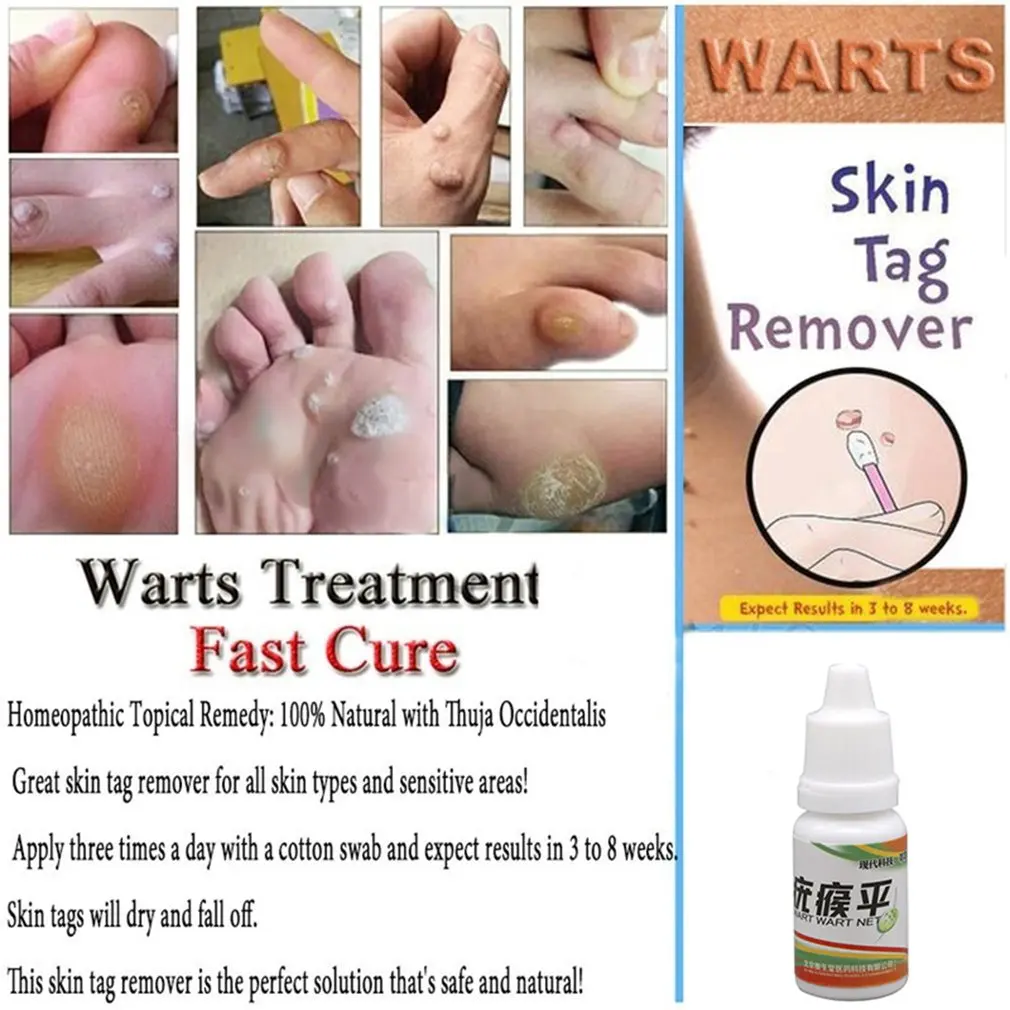Warts on Foot Treatment: Plantar Warts – Symptoms and Causes
What are the symptoms of plantar warts? What causes plantar warts? Get the answers to these questions and more about warts on the foot.
Plantar Warts: Understanding the Symptoms
Plantar warts, also known as verrucae, are a type of wart that develops on the soles of the feet. They are caused by the human papillomavirus (HPV) and can be quite painful and uncomfortable. Understanding the symptoms of plantar warts is the first step in seeking proper treatment.
One of the most common symptoms of plantar warts is a small, rough growth on the bottom of the foot. These growths may have a grainy or mosaic-like appearance and may be surrounded by thick, calloused skin. Plantar warts can be painful, especially when walking or standing, as the pressure from body weight can cause them to grow inward into the skin.
In some cases, plantar warts may also cause the skin to develop black dots or small blood vessels, which are a result of the wart’s blood supply. These black dots are not a cause for concern and are simply a visible sign of the wart’s internal structure.
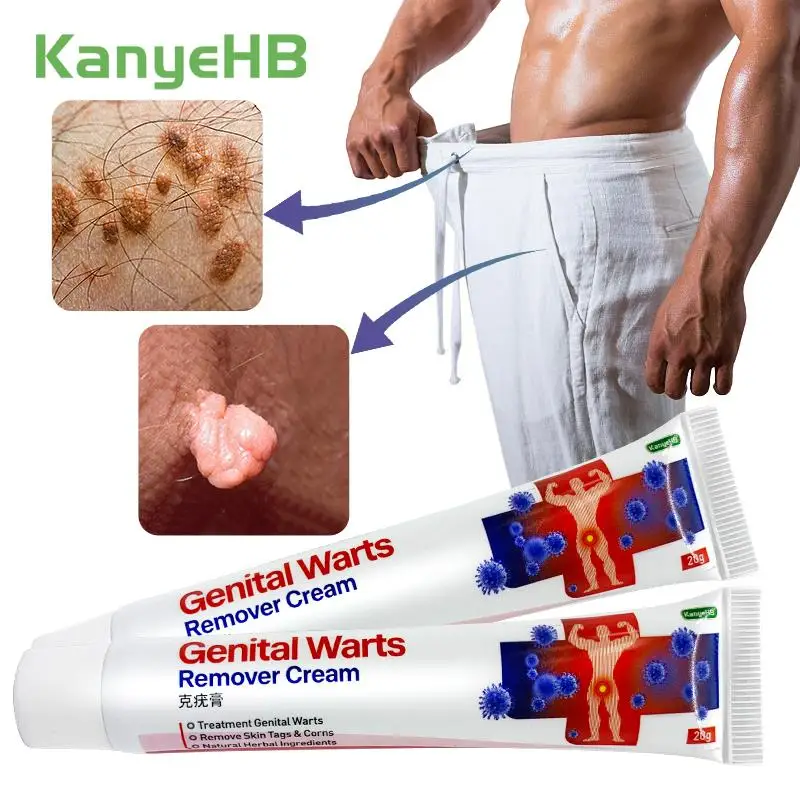
The Causes of Plantar Warts
Plantar warts are caused by the human papillomavirus (HPV), a highly contagious virus that can be transmitted through direct contact or through contact with a contaminated surface. The virus is particularly adept at entering the body through small cuts or breaks in the skin on the feet, which is why plantar warts are commonly found on the soles of the feet.
Certain factors can increase the risk of developing plantar warts, including:
- Walking barefoot in public places, such as locker rooms, pools, or communal showers
- Having a weakened immune system due to certain medical conditions or treatments
- Experiencing a skin injury, such as a cut or scrape, on the bottom of the foot
- Sharing personal items, such as towels or socks, with someone who has plantar warts
It’s important to note that not everyone who is exposed to the HPV virus will develop plantar warts. The virus can remain dormant in the body for an extended period of time before causing any visible symptoms.

Diagnosing Plantar Warts
Diagnosing plantar warts is typically a straightforward process for healthcare professionals. During a physical examination, the doctor will visually inspect the affected area and look for the characteristic signs of a plantar wart, such as the rough, grainy appearance and the presence of black dots or small blood vessels.
In some cases, the doctor may need to perform additional tests, such as a biopsy or a skin scraping, to confirm the diagnosis and rule out other skin conditions that may have similar symptoms. This is particularly important if the wart is not responding to traditional treatment methods or if the doctor suspects a more serious underlying condition.
Treating Plantar Warts
The treatment for plantar warts can vary depending on the severity of the condition and the individual’s response to different therapies. In many cases, the wart can be successfully treated using over-the-counter medications or home remedies, such as:
- Salicylic acid: This chemical compound helps to gradually break down the wart’s tissue, allowing it to be removed.
- Cryotherapy: The wart is frozen using liquid nitrogen, which can help to destroy the wart’s cells.
- Duct tape: Covering the wart with duct tape can help to soften the skin and make it easier to remove the wart.

In more severe or persistent cases, a healthcare professional may recommend more advanced treatment options, such as:
- Prescription-strength medications: These may include stronger concentrations of salicylic acid or other topical treatments.
- Laser therapy: Using a specialized laser, the wart can be precisely targeted and removed.
- Surgical removal: In some cases, the wart may need to be surgically removed if other treatments are not effective.
Preventing the Spread of Plantar Warts
To help prevent the spread of plantar warts, it’s important to take the following precautions:
- Avoid walking barefoot in public places, such as locker rooms or communal showers.
- Wear protective footwear, such as sandals or water shoes, when in these types of environments.
- Avoid sharing personal items, such as towels or socks, with someone who has plantar warts.
- Maintain good foot hygiene by keeping the feet clean and dry.
- Treat any cuts or scrapes on the feet promptly to prevent the virus from entering the body.
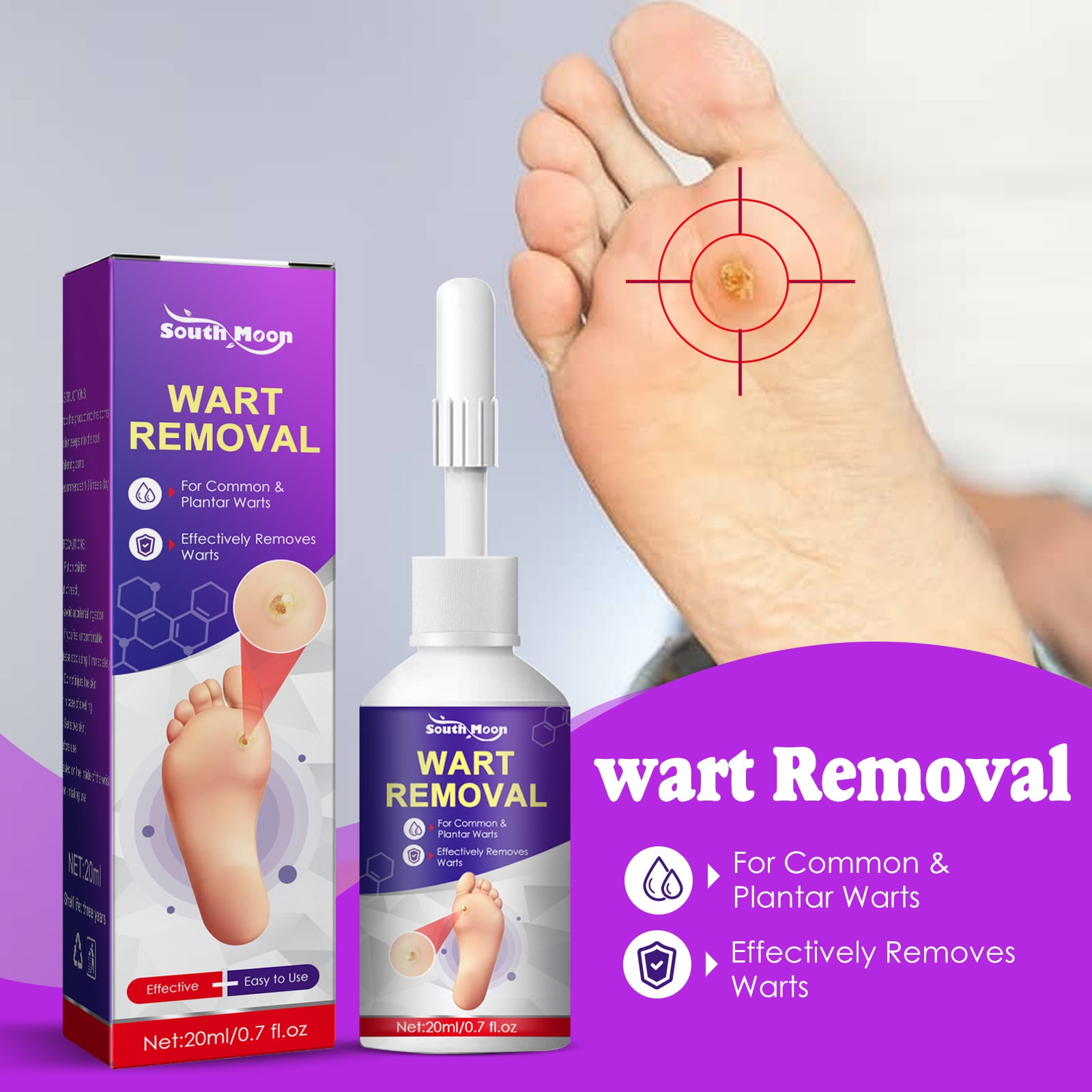
If you suspect you have developed a plantar wart, it’s important to seek medical attention as soon as possible to prevent the wart from spreading and to ensure effective treatment.
Understanding the Recurrence of Plantar Warts
One of the challenges with plantar warts is that they can be persistent and tend to recur, even after successful treatment. This is because the HPV virus that causes plantar warts can remain dormant in the body for an extended period of time, even after the wart has been removed.
In some cases, the wart may appear to have been successfully treated, only to return at a later date. This can be frustrating for individuals who have undergone multiple rounds of treatment, but it’s important to remember that recurrence is not an uncommon occurrence with plantar warts.
To help reduce the risk of recurrence, it’s important to follow the preventive measures outlined earlier, such as avoiding barefoot walking in public places and maintaining good foot hygiene. Additionally, if a plantar wart does return, it’s important to seek prompt medical attention to prevent the wart from spreading and causing further discomfort.

Seeking Professional Treatment for Plantar Warts
If over-the-counter treatments or home remedies are not effective in treating a plantar wart, it’s important to seek professional medical attention. A healthcare provider, such as a dermatologist or a podiatrist, can evaluate the wart and recommend the most appropriate treatment plan based on the individual’s specific needs and the severity of the condition.
Professional treatment may involve more advanced therapies, such as prescription-strength medications, laser therapy, or surgical removal, depending on the individual case. It’s important to follow the healthcare provider’s instructions and complete the full course of treatment to ensure the best possible outcome and to reduce the risk of recurrence.
In some cases, the healthcare provider may also recommend preventive measures, such as regular foot exams or the use of custom orthotics, to help reduce the risk of developing plantar warts or to prevent the wart from recurring.
Warts: Diagnosis and treatment
Diseases & conditions
-
Coronavirus Resource Center
-
Acne
-
Eczema
-
Hair loss
-
Psoriasis
-
Rosacea
-
Skin cancer
-
A to Z diseases
-
A to Z videos
- DIY acne treatment
- How dermatologists treat
- Skin care: Acne-prone skin
- Causes
- Is it really acne?
- Types & treatments
- Childhood eczema
- Adult eczema
- Insider secrets
- Types of hair loss
- Treatment for hair loss
- Causes of hair loss
- Hair care matters
- Insider secrets
- What is psoriasis
- Diagnosis & treatment
- Skin, hair & nail care
- Triggers
- Insider secrets
- What is rosacea
- Treatment
- Skin care & triggers
- Insider secrets
- Types and treatment
- Find skin cancer
- Prevent skin cancer
- Raise awareness
- Español
Featured
Reduce summertime rosacea flare-ups
The sun, heat, and humidity can all trigger rosacea and lead to flare-ups. Find out how you can enjoy summer while reducing flare-ups.
Find out how you can enjoy summer while reducing flare-ups.
JAK inhibitors: A newer type of medication
JAK inhibitors are helping patients with alopecia areata, eczema/atopic dermatitis, psoriasis, and vitiligo. Here’s what you need to know.
Everyday care
-
Skin care basics
-
Skin care secrets
-
Injured skin
-
Itchy skin
-
Sun protection
-
Hair & scalp care
-
Nail care secrets
- Basic skin care
- Dry, oily skin
- Hair removal
- Tattoos and piercings
- Anti-aging skin care
- For your face
- For your skin routine
- Preventing skin problems
- Bites & stings
- Burns, cuts, & other wounds
- Itch relief
- Poison ivy, oak & sumac
- Rashes
- Shade, clothing, and sunscreen
- Sun damage and your skin
- Aprenda a proteger su piel del sol
- Your hair
- Your scalp
- Nail care basics
- Manicures & pedicures
Featured
Practice Safe Sun
Everyone’s at risk for skin cancer. These dermatologists’ tips tell you how to protect your skin.
These dermatologists’ tips tell you how to protect your skin.
Relieve uncontrollably itchy skin
Find out what may be causing the itch and what can bring relief.
Darker Skin Tones
-
Skin care secrets
-
Hair care
-
Hair loss
-
Diseases & Conditions
- Acne
- Dark spots
- Dry skin
- Light spots
- Razor bumps
- Caring for Black hair
- Scalp psoriasis
- Weaves & extensions
- Central centrifugal cicatricial alopecia
- Frontal fibrosing alopecia
- Hairstyles that pull can cause hair loss
- Acanthosis nigricans
- Acne keloidalis nuchae
- Hidradenitis suppurativa
- Keloid scars
- Lupus and your skin
- Sarcoidosis and your skin
- Skin cancer
- Vitiligo
- More diseases & conditions
Featured
Fade dark spots
Find out why dark spots appear and what can fade them.
Untreatable razor bumps or acne?
If you have what feels like razor bumps or acne on the back of your neck or scalp, you may have acne keloidalis nuchae. Find out what can help.
Cosmetic treatments
-
Your safety
-
Age spots & dark marks
-
Cellulite & fat removal
-
Hair removal
-
Scars & stretch marks
-
Wrinkles
-
Younger-looking skin
Featured
Laser hair removal
You can expect permanent results in all but one area. Do you know which one?
Do you know which one?
Scar treatment
If you want to diminish a noticeable scar, know these 10 things before having laser treatment.
Botox
It can smooth out deep wrinkles and lines, but the results aren’t permanent. Here’s how long botox tends to last.
Public health programs
-
Skin cancer awareness
-
Free skin cancer screenings
-
Kids’ camp
-
Good Skin Knowledge
-
Shade Structure grants
-
Skin Cancer, Take a Hike!™
-
Awareness campaigns
-
Flyers & posters
-
Get involved
- Lesson plans and activities
- Community grants
Featured
Free materials to help raise skin cancer awareness
Use these professionally produced online infographics, posters, and videos to help others find and prevent skin cancer.
Dermatologist-approved lesson plans, activities you can use
Free to everyone, these materials teach young people about common skin conditions, which can prevent misunderstanding and bullying.
Find a dermatologist
-
Find a dermatologist
-
What is a dermatologist?
-
FAAD: What it means
-
How to select a dermatologist
-
Your digital health
-
Prior authorization
-
Dermatologists team up to improve patient care
- Finding accurate health information
- Health apps
- Wearable medical devices
- Telemedicine
- Protect your information
Featured
Find a Dermatologist
You can search by location, condition, and procedure to find the dermatologist that’s right for you.
What is a dermatologist?
A dermatologist is a medical doctor who specializes in treating the skin, hair, and nails. Dermatologists care for people of all ages.
Plantar Wart Home Remedy: 7 Treatments
Plantar warts may go away on their own or with home remedies and over-the-counter products, such as salicylic acid.
Plantar warts occur from a viral infection in your skin called the human papillomavirus (HPV). This virus can enter damaged skin more easily, such as cuts, scrapes, or severely dry skin. Plantar warts are common on the soles of the feet.
These types of warts can be painful, and the resulting raised bumps uncomfortable. Plantar warts may also have tiny black spots that some people call “wart seeds.” These spots are actually blood vessels. While not necessarily harmful, plantar warts can grow and eventually make it uncomfortable to stand and walk.
It’s often possible to treat plantar warts at home, but it’s also important to know when you should see a doctor for medical treatment.
While plantar warts aren’t typically dangerous, you might want to get them removed due to discomfort and aesthetic reasons. Warts can get larger over time or spread to other areas. Most wart removal treatments will take several weeks, if not longer, according to the American Academy of Dermatology.
Duct tape
Some people claim you can get rid of plantar warts by using duct tape.
The evidence to support this method is mixed, according to experts. But even if it doesn’t help, using duct tape probably won’t cause harm. To try it, stick a small piece of tape over the wart, and then change the tape every few days.
The idea behind duct tape for warts is that it could help “peel away” the layers of the wart. In theory, the wart could eventually peel completely away. But it’s not known if duct tape really works this way.
Salicylic acid
Salicylic acid is a type of beta hydroxy acid often used in acne treatment. It works by removing dead skin cells, which can sometimes clog your pores.
Higher concentrations of salicylic acid can be found in over-the-counter (OTC) wart creams treatments. These products shed the skin around the wart little by little, until it’s eventually cleared up completely.
To get the most out of this treatment, you’ll need to apply the salicylic acid product on your plantar warts according to the instructions on the packaging, and continue the treatment for as long as directed.
Some products may advise you to to prep the skin by soaking the affected area in warm water before applying the acid.
It can take several weeks of treatment for the warts to completely go away.
OTC freezing sprays
Aside from salicylic acid, you can also buy “freezing sprays” at the drugstore for plantar warts. The spray works by creating a small blister-like injury that may help destroy the wart. This is different from the cryotherapy wart treatments that are available at a doctor’s office.
This is different from the cryotherapy wart treatments that are available at a doctor’s office.
To use freezing spray, carefully follow the instructions on the packaging. You might have to repeat the process several times to kill the wart. Check the instructions to see if it’s safe to do so. If OTC treatment doesn’t get rid of the wart, talk with your doctor about other treatment options.
Iodine
Iodine is an essential mineral that’s most often associated with thyroid health. But certain formulations can be used for other purposes too — this may include wart removal.
One small study found that a povidone-iodine topical solution helped clear up warts after twice-daily applications over the course of 12 weeks.
Researchers are conducting clinical trials to test povidone-iodine’s safety and effectiveness for wart treatment. In the meantime, you should only use povidone-iodine for warts under a doctor’s supervision.
Tea tree oil
Tea tree oil has historically been used as a topical antiseptic.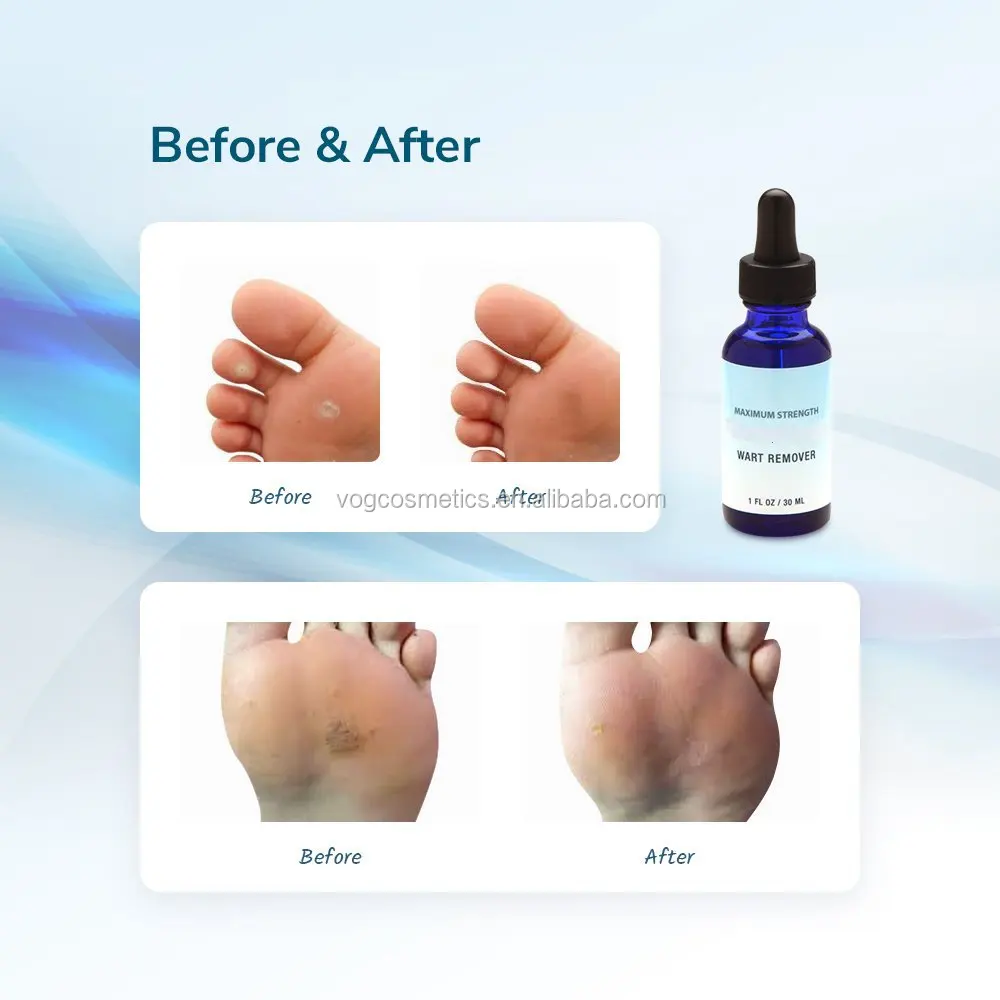 It’s primarily used for fungal infections, wounds, and acne.
It’s primarily used for fungal infections, wounds, and acne.
One case report from 2008 found that tea tree oil successfully removed warts on a person’s hand when applied once daily for 12 days. While this single report is promising, much more research is needed before experts can recommend this approach.
Tea tree oil can cause irritation or contact dermatitis for some people. If you use topical products containing tea tree oil, stop using them if you notice a rash or other symptoms.
Apple cider vinegar
Apple cider vinegar continues to be studied for a wide range of health claims. It contains a type of acid called acetic acid. Some older reports suggest that concentrated acetic acid can be used to treat warts. However, these treatments took place in a clinic with careful medical management.
The amount of acetic acid found in apple cider vingar is much less than the acetic acid preparations used in these studies. There’s also no evidence to suggest that apple cider vinegar is safe or effective for treating warts.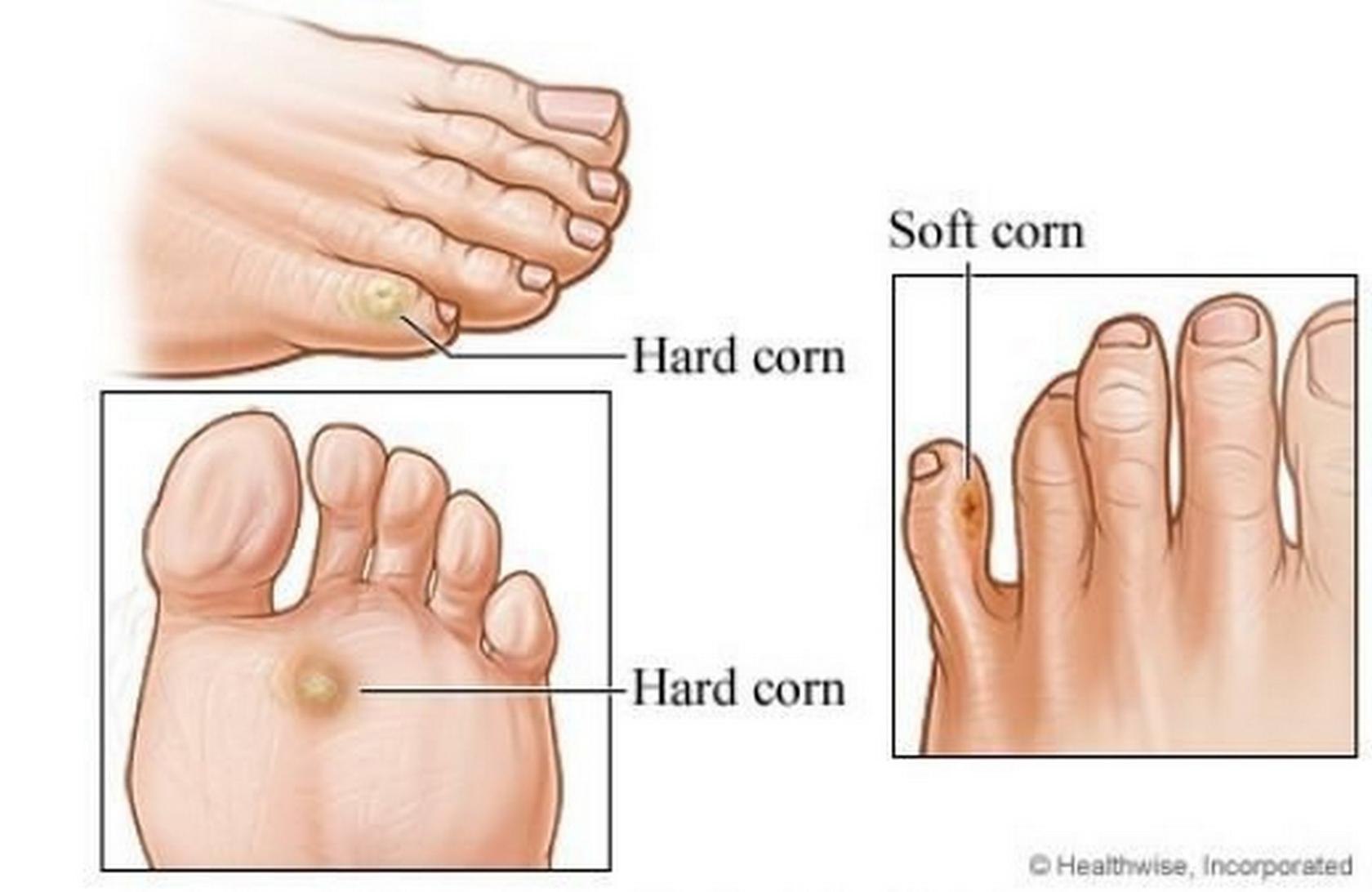
Because undiluted apple cider vinegar can cause chemical burns, you should not apply it to your skin. All in all, this wart “remedy” is likely one to avoid.
Calluses are caused by repeated friction against the skin. These are most common on your hands and feet. With a callus, you may notice a flat area of thickened skin.
Calluses aren’t the same thing as plantar warts. However, sometimes the two look alike. It’s also possible to have plantar warts inside of a callus.
In some cases, you may be able to tell the difference by looking at the lines on your skin. With warts, you may see interrupted skin lines (your skin lines do not continue on the wart). With a callus, the skin lines are not interrupted.
Calluses can go away on their own when friction against the skin has stopped, such as when changing tight shoes for a better-fitting pair. The outer skin of the callus may also be cut off or filed away.
While plantar warts are caused by the HPV virus, there are other risk factors to consider.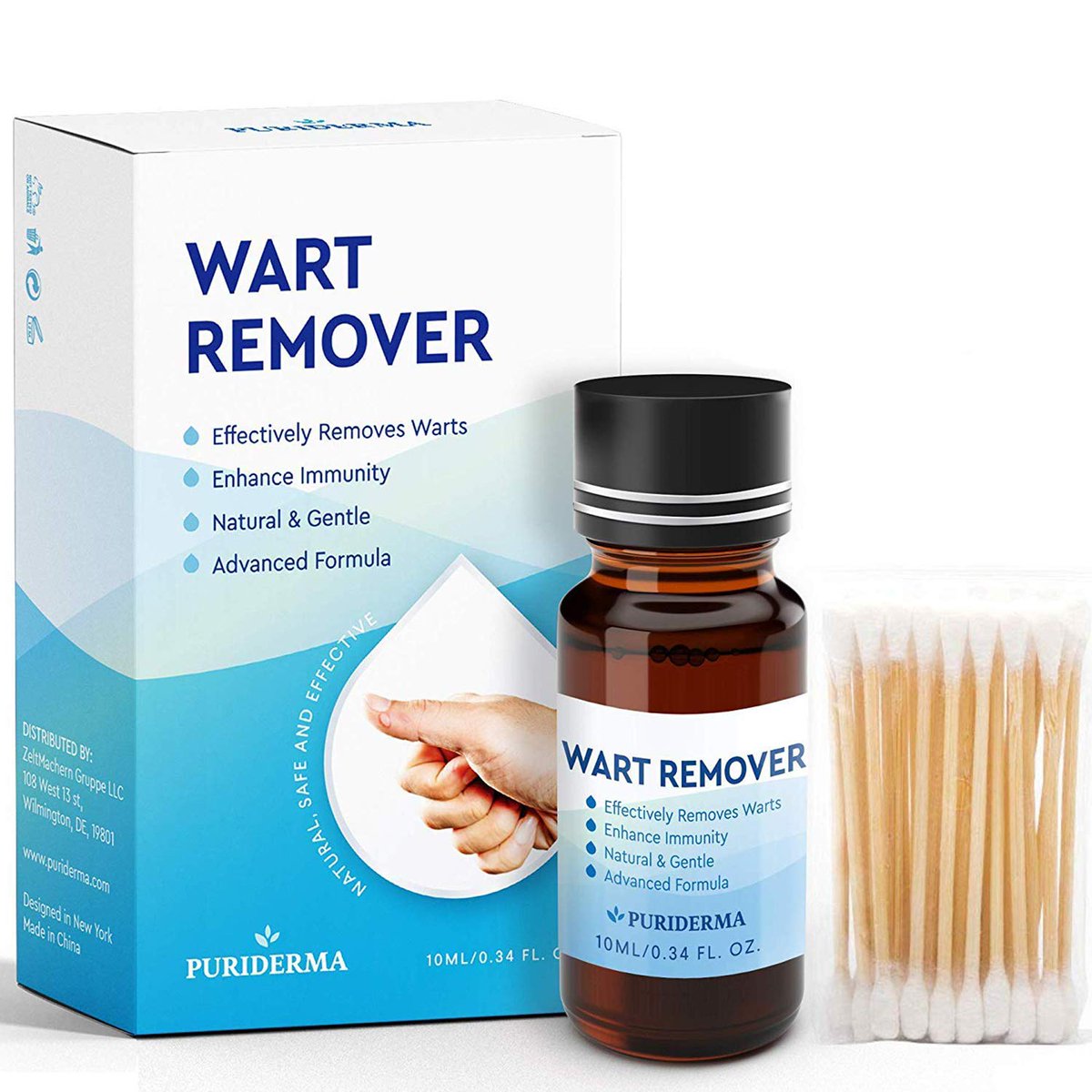 You might be at an increased risk of getting plantar warts if you:
You might be at an increased risk of getting plantar warts if you:
- have a history of plantar warts
- are a child or a teenager
- have a weakened immune system
- frequently walk barefoot, especially in germ-prone areas like locker rooms
With the right precautions, plantar warts can often be prevented, even if you’re at a higher risk of developing them:
- Avoid touching warts, including your own.
- Wash your hands before and after touching a wart.
- Don’t pick at a plantar wart with your fingers.
- Avoid using the files and pumice stones you used on affected areas of skin for nonaffected areas.
- Don’t walk barefoot in public areas.
- Keep your feet clean and dry.
- Change your socks and shoes frequently.
Plantar warts that don’t go away or keep coming back despite home treatments should be looked at by a doctor. They can treat the warts in the office with cryotherapy or other treatments. They might also recommend prescription medications to help treat the wart.
For chronic plantar warts, your doctor may refer you to a foot specialist.
If you have any of the following conditions, see your doctor before starting a home wart treatment:
- diabetes
- a weakened immune system
- HIV or AIDS
- solid brown or black warts (these could be cancerous)
- plantar warts that change in color and size
- severe discomfort due to the warts
- changes in your gait
Plantar warts tend to go away eventually, and you may be able to treat them at home.
When in doubt, always ask a doctor for advice, especially if the plantar warts worsen or affect your daily mobility.
Plantar Wart (Spike): Causes and Treatments
Plantar Warts is a type of wart that occurs on the soles of the feet and on the palms of the hands.
Of all skin warts, plantar warts occur in 30%. They are the ones most often removed.
The only cause is the human papillomavirus, HPV for short.
Scheme of infection: people scratched the skin. The virus enters the skin. Embedded in the genes of skin cells. The cell takes on ugly forms, becoming similar to tumor cells.
Caution: Some types of human papillomavirus can cause cervical dysplasia and cancer.
Infection with the type of HPV that causes warts occurs during childhood. Almost all children become infected with this virus – in kindergartens, at schools, in public places. But not everyone gets sick – it all depends on the immune system. In childhood, warts appear for the first time. Then the adult’s immune system copes with this virus. Therefore, in adults, warts on the skin rarely appear. And if an adult has spikes, this indicates a decrease in the activity of the immune system.
Entrance gates for the virus are injuries of the soles of the feet and palms: scratches, cuts, abrasions and calluses. Provoking factors – excessive sweating of the feet and wearing tight shoes, stress.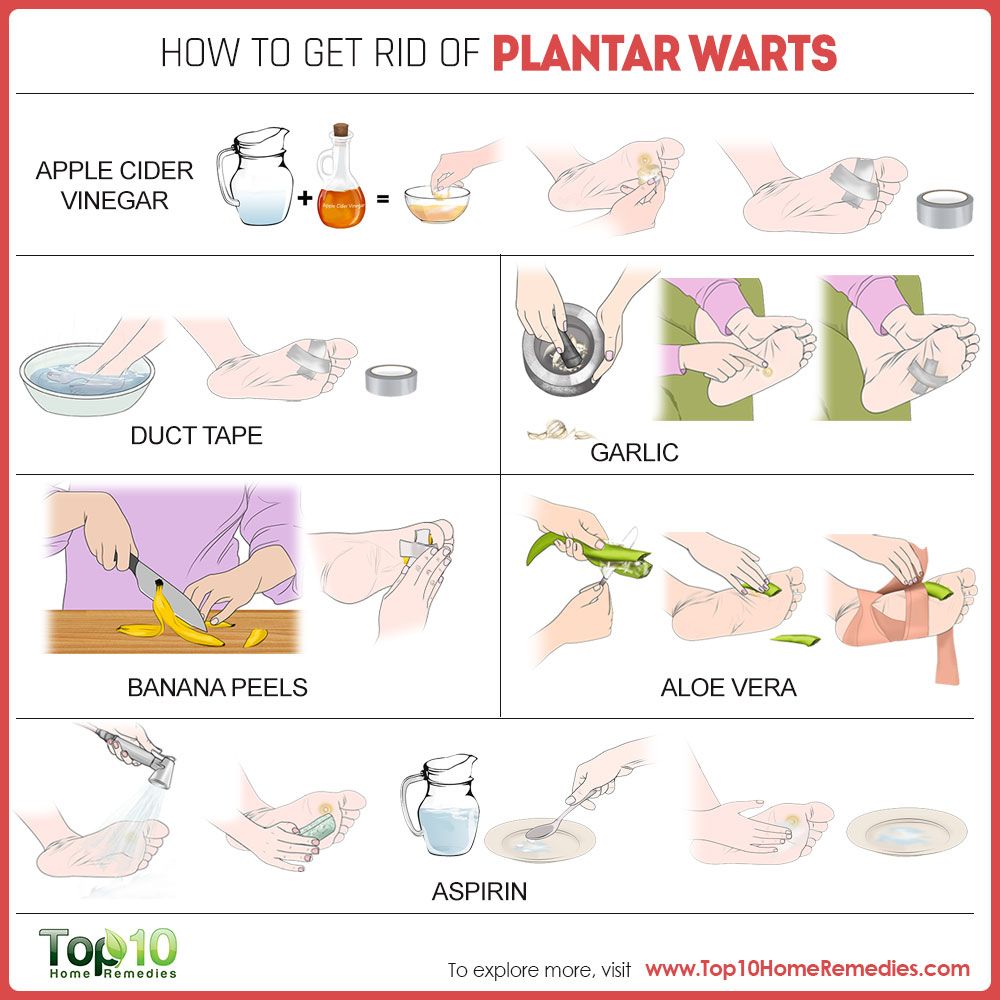
Main manifestation : hard, round formation on the palm or sole of the foot.
Main symptom : Pain when walking and itching around the wart.
Initial stage:
- a small callus appears,
- she itches,
- hurts when walking.
After 2-4 weeks:
- Rough surface appears in the center,
- often – black dots in the center, **
- along the edges – a small roller of keratinized skin.
Why?
- Why do spines appear on the palm and sole? Because the skin here is especially dense (unlike other parts of the body). And this type of HPV virus infects just such skin.
- Why does it hurt when walking? Because the spine grows inward. When walking, the weight of the body presses on the wart and it compresses the pain receptors.
- Why is itching? Because the ugly cells of the plantar wart on the foot and palm press on neighboring skin receptors, which leads to itching.

- Why black dots? This is the result of blockage of blood vessels in the thickness of the wart on the foot or on the palm.
Dimensions – 3 -10 mm. At the same time, they rise above the surface of the skin by only 1-2 mm, because they grow inward and in breadth.
Child warts may appear nearby. They merge with the mother and form a painful conglomerate. This is a clear indicator of a decrease in immunity. And this often requires medical treatment.
Methods of treatment:
In 90% of people, a plantar wart goes away without treatment at an early stage. The immune system suppresses the virus and heals the skin.
The time of self-healing depends on the stage of the process: from 2 weeks to 1.5 years.
When should a thorn be treated?
- if it hurts a lot,
- if it interferes with walking,
- if grown to a large size,
- if children appear nearby.
How and with what to treat warts on the feet?
Removal – a treatment that is successful in 98% of patients
Drug removal
Local necrotizing agents are used for this purpose.
Solcoderm, vartoks, duofilm, kollomak, super celandine and others
They contain acids or alkalis. Removal of plantar warts (thorns) occurs through a chemical burn of the skin. The wart is dying.
And in this place there is an inconspicuous scar.
The treatment time is long: an average of 14-20 days).
The probability of recurrence (reappearance at the same place) is very high.
Instrument removal
- Laser.
Your wart will be vaporized by the laser. In this place you will have a deep wound. The wound will heal in 10-14 days.
Disadvantages of the method: deep wound after removal. Rough scarring.
- Liquid nitrogen.
Deep freezing of tissue occurs. A bubble forms. It will hurt a lot and then hurt more!! Heals 14 days.
Disadvantages of the method: Severe pain during removal and after removal. Prolonged healing. Rough scar.
- Radio wave radiation (device “Surgitron”).
The same effect as from the laser – tissue evaporation. And only a deepening-wound will remain from the wart.
And only a deepening-wound will remain from the wart.
Advantages of the method:
Nearby vessels are coagulated, forming a dense crust at the site of the neoplasm, so the removal is performed without damage to the vessels and does not cause even the slightest blood loss.
The crust disappears on its own after 7-10 days. In its place is an inconspicuous scar.
The wart is burned out with an electrocoagulator. This is the same scalpel, only electric. It is now rarely used in large clinics.
Prevention is the foundation of the foundations
- Wearing loose shoes.
- Treatment of excessive sweating of the feet.
- Treatment of injuries, scratches and cuts on the feet.
- A healthy lifestyle and strengthening of the immune system is the prevention of viral diseases, including the HPV virus.
plantar wart wart removal spine
Please enable JavaScript to view comments.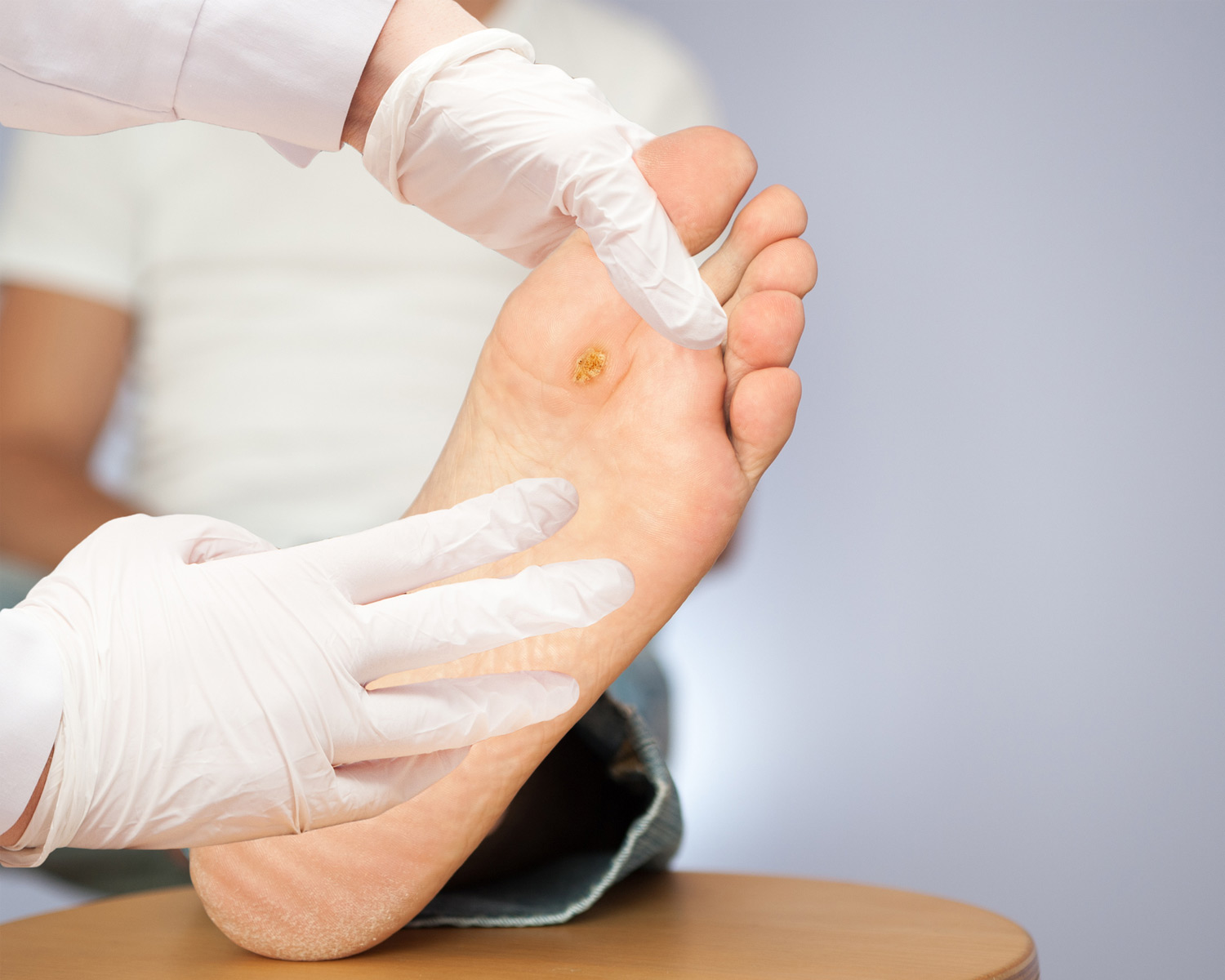
Plantar wart – treatment and removal of warts
Life with a plantar wart is a torment: it is impossible to stand or walk. And it’s scary to go to the doctor – the removal is very painful, and the wound after such a procedure heals for a long time. And only recently, dermatologists have a gentle way to deal with this problem.
Whatever people came up with in search of a way to get rid of plantar warts. They rubbed them with potatoes or garlic, tied the meat to the wart. The use of “burning” products at home is often ineffective and can lead to the appearance of rough scars. In general, anyone who has ever tried to get rid of a plantar wart on their own knows that everything is useless, you cannot do without a doctor.
IMPORTANT! Information from the article cannot be used for self-diagnosis and self-treatment! Only a doctor can prescribe the necessary examinations, establish a diagnosis and draw up a treatment plan for a consultation!
What is a plantar wart?
A plantar wart is nothing like the ones you see on the body. Why do they appear, as if from nowhere? There was nothing on the sole of the foot and suddenly you can’t walk.
Why do they appear, as if from nowhere? There was nothing on the sole of the foot and suddenly you can’t walk.
Any warts are skin neoplasms, the development of which is provoked by human papillomavirus (HPV) . That is, a wart is a viral disease that needs to be treated systemically.
You can become infected with HPV through contact with an infected person or through household items, especially if a person has weakened immunity, both general and local. The virus most easily penetrates the skin through microtraumas and skin soaked in water (maceration), so often the most unpleasant – plantar – warts appear in those who visit the pool or gym.
Warts are different:
- vulgar (translated from Latin – ordinary),
- flat,
- plantar
- genital warts.
Of course, warts do not color anyone, so their owners try to get rid of a cosmetic defect. But the pain is delivered, as a rule, plantar. Outwardly, they look like corns and occur more often on the skin of the soles – in places of pressure and friction.
Usually the skin thickens there due to increased keratinization. When pressure is applied to plantar warts, the pain can be so intense that patients compare it to a “nail in a boot.”
Treatment of a plantar wart at home
Drugs are sold in pharmacies, the instructions for which say that the indication for use is plantar warts. But, removing warts at home is undesirable, because it is often ineffective and can cause complications.
Most home remedies are strong solutions of alkalis or acids. When using them, the occurrence of a deep long-healing burn and the development of a rough scar are possible 0008 . With insufficient exposure, warts reappear. In addition, infection of the wound and the development of purulent complications are possible.
The method of treatment must be chosen by the physician . And the application of any destructive drugs should also be carried out by a doctor or take place under his supervision.
Removal of plantar warts
How this is done is up to the doctor. It is possible to minimize the risk of recurrence (relapse) of the wart with the help of complex therapy. Despite the fact that today there are no drugs that completely kill the human papillomavirus in the body, many patients need antiviral therapy. In addition, the formed wart must be removed. For the destruction (destruction) of warts, a laser, liquid nitrogen, cauterizing, keratolytic and mummifying agents can be used.
Laser removal of large warts is often more effective than liquid nitrogen removal. Before laser destruction, the plantar wart is chipped with an anesthetic, which is a rather painful procedure. During laser destruction, in addition to the destruction of the formation itself, thermal heating (burning) of the surrounding tissues occurs, which, on the one hand, damages the virus, and on the other hand, leads to some inflammation around the removed wart. Wounds on the skin of the soles do not heal quickly, as there is constant pressure on the damaged area when walking.